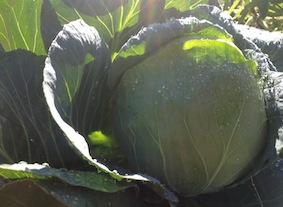+86- 111****
Boluo county dragon Lotus Lake Village Town Industrial Park, China

No two-person urban household needs to plant a dozen cabbage plants. That’s the lesson I’ve learned this month.
Cabbage is the crop I plant and forget. In May or June I typically bring back a handful of cabbage transplants from my brother’s farm, where they grow a commercial variety of your basic green cabbage.
That handful, of course, usually has about two or three dozen viable baby cabbage plants; I plant a dozen for myself and give the rest to my neighbors. That first week all 12 look like they’ll wither away to nothing. But then they all rebound and silently putter away growing until September and October, when their large, round, green heads are literally splitting with their effort.
Needless to say, cabbage is easy. Even still, there are some items of note about the crop:
There are three general types of cabbage:
• Smooth, tight heads in green or red and store well
• Crinkly leaved or savoy cabbage with deeply ruffled leaves (also in red or green)
• Chinese cabbage, which has light green leaves and more of a romaine lettuce appearance.
Cabbage loves cool weather. Plant an early spring crop and protect it from real cold weather with floating row covers to be ready before the first days of summer. Plant another crop of transplants out in the garden in mid July for harvest in mid to late fall.
Soil and Sun: Plant cabbage in soil that is well amended with nitrogen-rich compost. The more sun, the better.
Water: Cabbage has a high water requirement, especially through August. That might explain why my cabbages sputter in their growth during that time of year. They’ll also benefit from a good mulching to keep the soil cool.
Pests: You know they’re out there. If you see holes eaten into cabbage leaves, the culprit is likely the larvae of the cabbage white butterfly and cabbage moth. If you’re a user of floating row covers, those can help protect the plants when they are still quite small. I’ve had an issue with aphids congregating at the base of outer leaves. It’s a big issue to deal with when the plants are still quite small and the leaves haven’t yet collected themselves into tight heads. Keep an eye out for this.
The long-season varieties of cabbage are the ones that store best. They can be kept for up to two months if wrapped in newspaper and stored in a root cellar. No root cellars here, so my storage option is the refrigerator. They still will last a long time. Just peel off any outer leaves that are discolored.
Cabbage and carrot slaw is my secret to a homemade banh mi, a street sandwich popular in Thailand.
I’m making plans for next spring to get as much out of my early-spring garden as possible. And that’s going to include a crop of cabbage. Stay tuned.